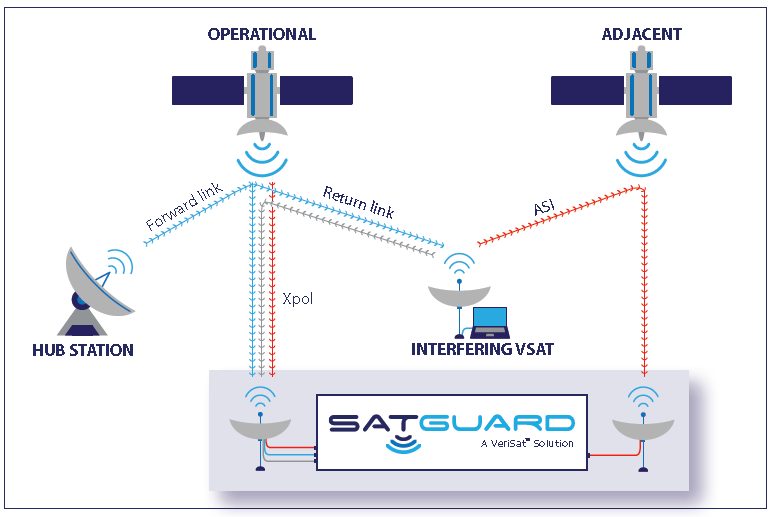
-
StatusOngoing
-
Status date2016-05-23
-
Activity Code6B.028

Interference caused by a VSAT terminal becomes a problem when the TDMA transmission from the misaligned VSAT terminal(s) negatively impacts services on the opposite polarization (Xpol) or services in a neighboring orbital position (ASI). Combating VSAT interference has until now been complicated and time-consuming due to the shared use of inbound carriers.
SatGuard determines which VSAT terminals cause interference, referenced by the terminal ID, such as terminal MAC address. By providing this information to the VSAT hub operator, the transmission from the VSAT causing interference can easily be stopped corrective steps can be initiated.
SatGuard automatically and quickly determines the source(s) of interference by:
- Collecting signalling information from the operational links
- Detection of the interfering burst by arrival time and power level
- Correlating the information from operational and interfered links
- For interfering VSATs, report terminal ID, interference level and burst count
- Single site version supports configurations where all links are received at the same site
- Dual site version supports cross-beam configurations where reception of the operational and interfered links are in different locations.
SYSTEM ARCHITECTURE
The SatGuard development plan is:
Preliminary Design Review: June 2015
Critical Design Review: October 2015
Acceptance Testing and completion of the project: December 2015
The project has resulted in the successful development of a SatGuard prototype that has been demonstrated to support a number of VSAT technologies covering a large majority of the deployed VSAT terminals.
SatGuard has been verified in live operations with SES, Eutelsat, Intelsat as well as other operators, and has been proven to solve interference problems quickly and efficiently.


